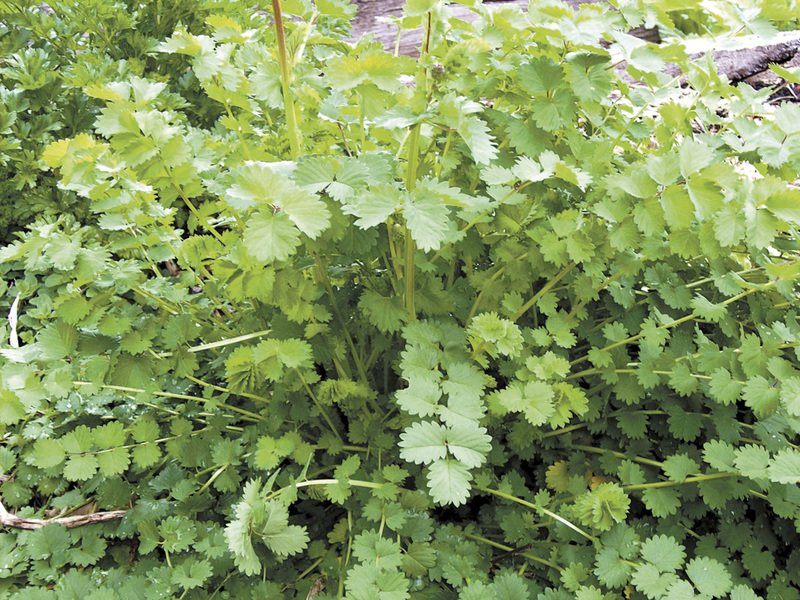For the Pilgrims the New World was filled with miracles. Instead of tiny pheasants that might make a small meal, they found turkeys that could feed a family. And they could have cucumbers in winter no matter what the weather. Well, they had the flavor if not the fruit of cucumbers in winter thanks to a small herb from the Old World. The herb is salad burnet, Poterium sanguisorba, whose Latin name, sanguisorba, translates as “blood-drink.” Because it was used to treat internal bleeding and hemorrhages, Colonial soldiers drank a tea of this herb in the belief that it would slow down bleeding.
Modern cooks use salad burnet as a diced topping for salads, soups, in casseroles, and added to stir-fry dishes. Many think the leaves have a hint of melon along with cucumber. Others say it has a slightly nutty taste.
You can use salad burnet just about any place you use mint. It complements the taste of rosemary and tarragon. Crush the leaves into your favorite salad dressings. Mix some into cream cheese. Add the tiny leaves to tea sandwiches, over fresh fish and even in dips.
The lacy, fern-like leaves make for an attractive plant that is at home in border, in the herb garden or on the windowsill.
Like all herbs, fresh is best. In fact, salad burnet loses most of its flavor when dried. Modern cooks can place fresh leaves in an ice cube tray, cover with water and freeze. Use these herb ice cubes later in the season. Or you can simply pot some salad burnet up for the windowsill for fresh leaves all year round.
You can start this perennial herb indoors from seed, or simply sow it directly in the garden in early spring. Barely cover the seeds, which will germinate in about eight days. Thin the plants to at least a foot apart. It might only grow about six to eight inches tall the first season and up to 18 inches tall thereafter. You can begin cutting the leaves at any time. By continuously cutting back the stems you will encourage new tender growth. Older leaves can become bitter.
Choose a spot that gets at least six hours of light a day. No need to worry about your soil; like many herbs it thrives in poor soil. Avoid wet areas which can cause root rot. If your winters are mild, salad burnet will grow right through the winter.
Plants are sometimes available in nurseries and seeds are available from mail order companies such as Park Seeds, Burpee and Southern Exposure, PO Box 460, Mineral, VA 23117.
If you let the pink-tipped flowers set seed they will often self-sow throughout the garden. It is hardy in USDA zones 4-8.
This tasty forgotten herb deserves a place at your table, harvest dinner or winter salad. Indeed salad burnet can even be put into turkey stuffing. It’s always available even under the snow. Now that is as cool as a cucumber.




















































